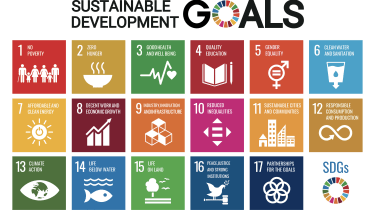investing
Newday’s ETF partners with UNICEF and other groups.Feel like society and the environment are beginning to break down? There’s an ETF for that.
Newday Impact’s Sustainable Development Goals ETF (SDGS) delivers a growth-oriented product that promotes dual impact, promising to advocate for environmental and social improvements and donating 10% of revenues to global youth education and skills development programs.
American Dystopia Partnering with a veritable who’s who of progressive economists, scientists, and non-profit organizations, the firm’s investment criteria rests on a sophisticated analysis of global ills and solutions. This approach may turn off investors who disdain concepts like decarbonizing the economy, but should resonate with anyone who feels like Mad Max may just drive down Mainstreet, U.S.A. any day now.
Though the problems are global, the U.S. is a great place to focus on these daunting problems, according to Newday’s President, Anne Popkin. “It doesn’t matter what side of the political spectrum you’re on,” said Popkin. The U.S. has “food inflation, heat waves, rising tides in the south, and fires in California. It’s all happening here.”
Limits to GrowthThe ETF’s rationale is based on the belief that the planet’s ability to withstand human impact on the environment is limited. When these limits are exceeded, we are said to have gone beyond the “planetary boundaries” of the earth. In fact, several resources, like forested land—central to food, fuel, clean water and air—have already been pushed beyond a safe limit of use. Crossing such a boundary means that humans will have an increasingly difficult time thriving, and eventually, surviving on the planet.
Newday points to two approaches that may alleviate this problem. First, the eponymous Sustainable Development Goals encompass 17 broad areas for improving human and environmental outcomes. Established in 2015, the UN Sustainable Development Goals help measure progress against global targets, like ensuring safe drinking water globally by 2030. If that sounds far-fetched, consider that the last version of this exercise, called the Millennium Development Goals, helped to raise over one billion people out of poverty between 2000 and 2015.
Second, Newday has embraced the approach of Earth4All, a group of economists and scientists advocating for revamping the economic system to stay within planetary limits. Based on computer modeling, they contend that climate change and inequality are inextricably linked.
Earth4All calls for an economic system that is focused less on growth metrics and more on the resilience and well-being of society and the environment. Some of these ideas stem from the 1972 book, Limits to Growth, which was also based on computer models that predicted a dystopian future if trends at the time continued.
Youth as the Solution“Our generation will basically try to stop the sinking of the ship,” according to Popkin, “but the youth will be the ones to find a way forward.” With this adage in mind, SDGS is partnering with UNICEF to develop its advocacy strategy.
Typically firms like Newday engage companies by meeting with executives, voting shareholder proxies, on up to filing shareholder proposals asking for specific changes to company policies.
The ETF will also donate 10% of revenues to several non-profit organizations that support youth leadership. One such group is EarthEcho International, which is building a youth movement to protect and restore oceans. EarthEcho was co-founded by ocean environmentalist Philippe Cousteau, Jr., grandson of the famed ocean explorer, Jacques Cousteau.
Popkin also points to the decline of the middle class and growing inequality in the US as problems the ETF will hope to address.
Under the ETF hoodSDGS seeks long-term capital appreciation, a category that still makes sense given today’s volatile market for investors with a longer time horizon. Benchmarked to the S&P 500, the actively managed SDGS has an expense ratio of 0.75%, which is about average for this type of ETF.
The ETF invests in a blend of value and growth stocks, with about 60% of companies based in the US, and about 40% abroad. Managers also avoid investments in specific countries, including Russia and China.
All holdings are screened to meet basic ESG criteria. Newday evaluates the quality and breadth of company sustainability disclosures, and whether third parties have certified the data. SDGS also avoids investing in companies engaged in the production of landmines, tobacco, and other controversial products. The fund also avoids companies that are involved in the fossil fuel industry or rely on child labor.
Newday’s SDGS is not the only ETF that links its holdings to the UN Sustainable Development Goals. For example, the MSCI Global Impact ETF (SDG) tracks the MSCI index of companies addressing at least one of the 17 goals. Morningstar gives this ETF a five-star, silver rating for being well-priced and having a good management team. The expense ratio is typical of an index ETF at 0.49%, and with over $384 million in assets under management, it has proven popular.
There are also numerous ETFs that target just one of the 17 goals, such as reducing the emissions that cause climate change. The SPDR MSCI USA Climate Paris Aligned ETF (NZUS) is one such example.
These ETFs, issued by more conventional managers, lack Newday’s strong commitment to corporate engagement and profit-sharing with key non-profit groups. Although Newday is small fry compared to firms like BlackRock or State Street, the firm does seem committed to an outsized focus on engagement. Unlike some of its impact-focused competitors, like Calvert and Green Century, the firm does not yet have a meaningful track record as an investor or activist.
